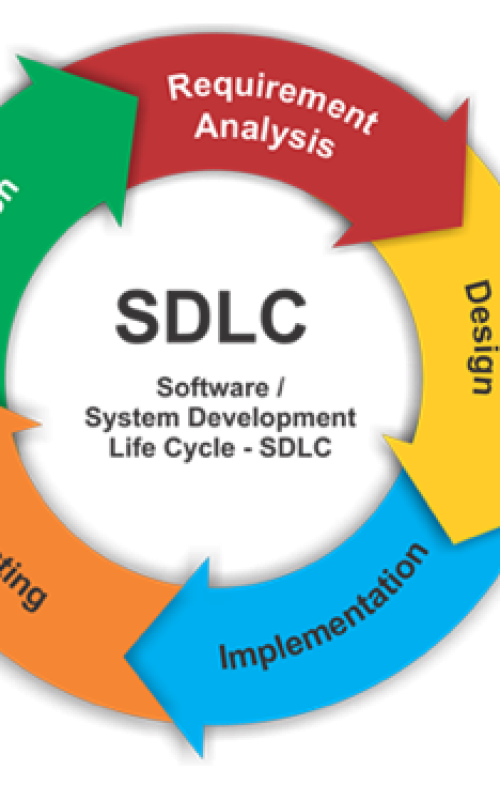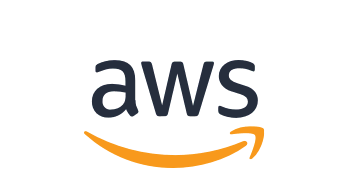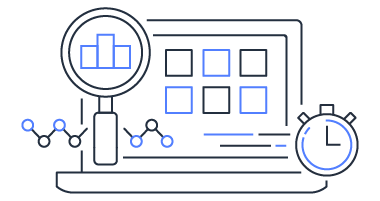
We Provide Best
DevOps Trainings
We provide DevOps services that help organizations move to the next level of software development. Our approach is called “Pivotal” and it emphasizes continuous learning, innovation, and collaboration between developers, ops teams, QA teams, and marketing teams. This way, we make sure that everyone is working together to achieve common goals and that everyone is constantly able to improve their skills.
We Provide Our
individual trainings
DEVOPS training can help you become more productive as a DevOps manager. This type of training is designed to teach you how to handle and diagnose errors, plan and execute system upgrades, and improve communication within your team. The most important aspect of this type of training is that it teaches you how to work together with other members of your team in order to make the most effective use of technology.
We provide Our
Corporate Trainings
Corporate DevOps training is a comprehensive and interactive course that helps to better understand the process of development and operations within a modern organization. The course provides an understanding of how software development and Operations are related, as well as tips on how to manage and automate common tasks. It also covers the different tools and resources available for Developers, Ops Managers, and Management teams to optimize their workflows.
Our IT Services Roadmap
If you had to start over as a DevOps professional and educator, this is the step-by-step process you would follow. Depending on the knowledge we currently possess, demonstrating to you the most effective route to take in order to become a DevOps engineer.With this, we want to be able to support you on your difficult but extremely rewarding DevOps path.
Is it also for the students that have Non-IT Background?
A question arises in the mind of various students that this training is also for non-IT background or not? So, the answer is Yes. We only wanted to make it easier for each student whatever he/she had an IT background or not. With us, you can easily grab the things whatever your background was like:
⦁ System Administrator
⦁ Software Developer
⦁ Test Automation Engineer
⦁ Network Engineer
⦁ Someone who just begin with DevOps
⦁ Non-IT Background
As a result, information on how to begin working in DevOps with any of these backgrounds may be found after introducing you with DevOps roadmap.


One Most Important Thing Before Starting:
DevOps involves working with many different technologies because it encompasses the entire software development lifecycle.
Following is the list of things you will learn with us.
⦁ Concepts of SDLC (Software Development and Lifecycle)
⦁ OS & Linux Basics
⦁ Containerization – Docker
⦁ CI & CD Pipelines
⦁ Learn One Cloud Provider
⦁ Container Orchestration & Kubernetes
⦁ Monitoring and Observability
⦁ Infrastructure as Code
⦁ Scripting Language
⦁ Version Control – Git
1: Basic Concepts of Software Development and Lifecycle:
Although you won’t be writing the code for the application as a DevOps engineer, you’ll be working directly with the development team to speed up and automate jobs for them, thus you should be familiar with the following ideas:
⦁ What is the method of Collaboration and working between developers (Agile, Jira Workflows).
⦁ What and how the developers use Git workflow.
⦁ What are the methods of configuring different applications (Like building and summarizing tools).
⦁ Different testing scopes and automation.


2: Basic OS and Linux Concepts:
As we know most of the servers use Linux Operating System because it uses command line interface and is safe as compare to other operating systems such as windows.
For learning this you must have basic knowledge of networking and security because you have to configure the infrastructures like:
⦁ Firewall configuration for secure access.
⦁ Basic understanding of the working of DNS, IP addresses and ports.
⦁ Load balancers
⦁ Different proxies
⦁ HTTP and HTTPS
Maintaining the infrastructure :
You are in charge of setting up and maintaining the infrastructure (servers) that the application is deployed on as a DevOps engineer. Therefore, you must understand the fundamentals of server administration and how to install various programs on a server.
You must comprehend the following fundamental operating systems concepts:
⦁ Shell Commands
⦁ Linux File System & Permissions
⦁ SSH Key Management
⦁ Virtualization
3: Containerization – Docker:
An application’s code and all of its dependencies are packaged up in a thing called a container. IT is a type of standard software unit that ensures us speedy and reliable performance in any computing environment. It has become the new way of packaging software so you mostly have to run your application or program as a container.
It directly indicates that you have understand the following concepts.
⦁ Concepts of Virtualization
⦁ Concepts of Containerization
⦁ How to manage and use an application that is containerized on a server
Docker:
In containers the most popular technology that most of the users using is Docker.
Somethings you must know for using docker.
⦁ Run Containers
⦁ Inspect Active Containers
⦁ Docker Networking
⦁ Persist Data with Docker Volumes
⦁ Docker’s Apps that use docker files
⦁ Run Multiple Containers using Docker – Compose
⦁ Work with Docker Repository


4: CI & CD Pipelines
Thus, Continuous Integration and Continuous Deployment (CI/CD) was created. Once the enhancement or problem remedy is complete, a CI server pipeline running (e.g., Jenkins) has to be started instantly, which performs the following steps.
⦁ Start Running the Tests
⦁ Start Packaging the Application
⦁ Creates an Image of the Container
⦁ Moves the Image of the container to an Image Repository
⦁ Deploys the Latest Version to a Server
CI & CD Platforms:
There are many CI & CD platforms that are used by different users but the most popular is “Jenkins”. Other popular platforms are GitLab, GitHub, Actions, Travis CI, Bamboo.
Following are the skills you need to learn.
⦁ Settling the CI & CD Servers
⦁ For triggering pipeline automatically code repository integration needed
⦁ To Package the application and for the execution of the tests build tools and package manager tools were needed
⦁ Configuration of artifact repositories (like Nexus) and integrate with pipeline

5: Learn One Cloud Provider with Us
Instead of managing their own infrastructure, many businesses now use virtual infrastructure in the cloud. These are systems that provide a variety of extra services, such as backup, security, load balancing, etc., known as Infrastructure as a Service (IaaS) platforms. These services are related to a specific platform so for applying this you have to learn that how to manage the whole deployment infrastructure on it.
For Example:
For AWS services you must know the basic fundamentals of:
IAM service – managing users and permissions
VPC service – your private network
EC2 service – virtual servers
IAAS Platform:
The most popular IAAS platform is AWS and after that there are many platforms like Microsoft Azure, Google Cloud etc.
AWS offers a wide range of services, so that you can understand the offerings you/your business genuinely need. Whenever the K8s cluster operates on AWS, hence you must also learn about the EKS service.

6: Containers Orchestration – Kubernetes
Containers are easy to use and are also popular so that’s why hundreds or thousands of containers are used by companies on different servers. For this these containers need to be managed all the time. For this process there are tools for the orchestration of the containers like Kubernetes, automation of the deployment, scaling and management of the application that are containerized.
Kubernetes:
This tool is for the orchestration of the containers. For this you need to learn the following steps.
⦁ How to use Kubernetes?
⦁ How we manage and administer the clusters of K8s?
⦁ How applications are deployed in Kubernetes?
Some Specific Steps to Learn About Kubernetes:
Following steps are for learning more about Kubernetes.
⦁ Core Components like Deployment, Service, Config Map, Secret, Stateful Set and Ingress
⦁ Kubernetes CLI (Kubectl)
⦁ Persisting data with K8s volumes
⦁ Namespace

7: Monitoring & Observability
As the production of a software starts the next steps is to monetize the software after each change so that different errors will find out easily during the production process.
You must have to cover up these responsibilities when you become a DevOps engineer.
⦁ Setting up Monetization of Software
⦁ Setting up Monetization of your infrastructure, e.g., for your Kubernetes cluster or underlying servers
⦁ Visualization of the data
Following are some useful tools for monitoring, analytics and for log management stack.
⦁ Prometheus
⦁ Grafana
⦁ ELK Stack
8: Infrastructure as Code
If we create an infrastructure manually or maintain it manually, it is very time consuming and a difficult task. Especially during the process of replication. For example, for the process or development, testing or for the production environment. So, for this in DevOps automation is needed. We use IAC for creating and configuring infrastructure. Following are the two types of IAC tools you need to know:
⦁ Infrastructure Provisioning
⦁ Configuration Management
Benefits of Using Codes:
Following are the benefits of using codes for infrastructures
⦁ Team Collaboration is Encouraged
⦁ Change of Information to Infrastructures
⦁ Transparency of the State of Infrastructure
Following are the Names of tools use for provisioning and configuration management.
⦁ Terraform (use for provisioning)
⦁ Ansible (use for configuration management)
9: Scripting Language:
9: Scripting Language:
⦁ What is the method of Collaboration and working between developers (Agile, Jira Workflows).
⦁ What and how the developers use Git workflow.
⦁ What are the methods of configuring different applications (Like building and summarizing tools).
⦁ Different testing scopes and automation.

active Clients
projects done
team advisors
Glorious Years
We are Trusted
15+ Countries Worldwide

Moonkle LTD,
Client of Company
SoftTech,
Manager of Company
Moonkle LTD,
Client of Company
